What are the best compact spotting scopes for hunting?
A spotting scope is a piece of equipment that allows you to view objects at some distance, particularly on land. It’s also great for birdwatching. By using the best compact spotting scope, you will see a lot of different birds and animal tracks that are impossible to observe with conventional binoculars.
It will help you to see all the beauty of the plumage of different birds. If you attach it to your smartphone or camera, you can also enjoy digiscoping.
As there are many compact spotting scopes on the market, you need to consider many details before buying a product. You need to pay attention to such important specifications as a scale range, coverage, price, weight, etc. I will analyze all these specs in detail and provide you with a list of the best products that you can purchase online.
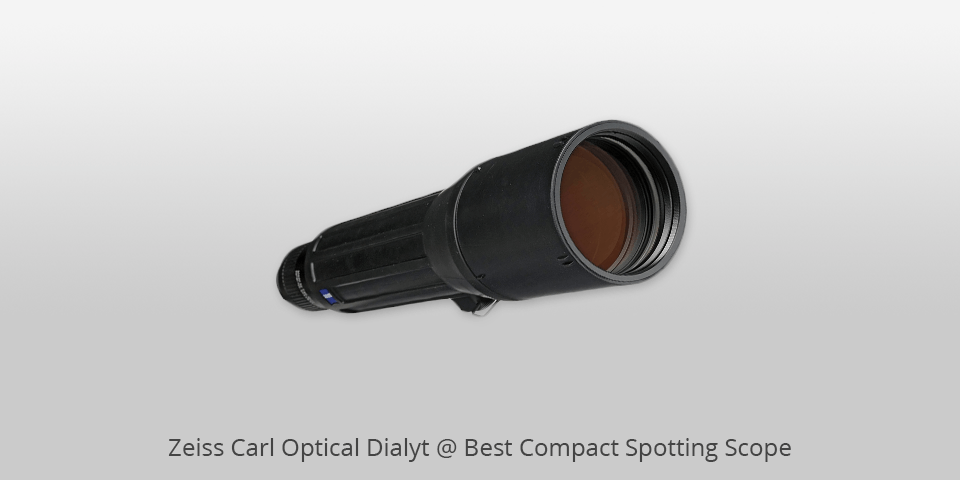
Magnification: 18x45 | Objective diameter: 45 mm | Field of view at 1000m: 40 metres | Closest focusing distance: 10 metres| Eye relief: 19 mm | Weight: 1190 g
⊕ High-performance optics
⊕ Fast and reliable aiming
⊕ No condensation
⊖ None
The Dialyt has a high-quality optical system that helps you get a good image even in poor lighting. This small spotting scope comes with a multilayer coating that is perfect when you need to use it in different conditions.
The Dialyt 18-45x65 is great for fast aiming or identification. Easy aiming allows you to take a good shot. Thanks to its small size, it fits into your backpack perfectly.
Another advantage of this lightweight spotting scope is that its housing is filled with nitrogen, which prevents condensation. The Dialyt 18-45x65 does a great job regardless of the weather.
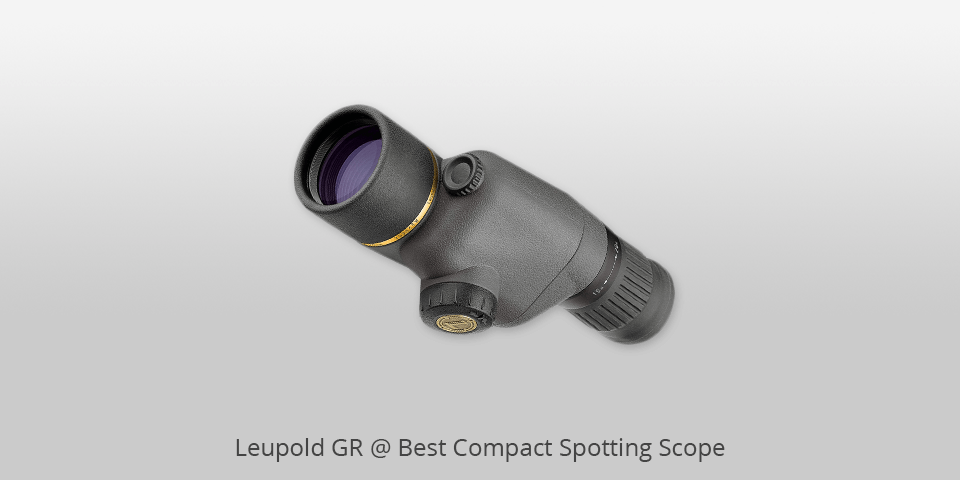
Magnification:10 x 40| Objective diameter:40 mm | Field of view at 1000m: 136 ft | Closest focusing distance: 36 ft | Eye relief: 30 mm | Weight: 450 g
⊕ Low-light performance
⊕ Great clarity
⊕ Waterproof
⊖ None
Gold Ring spotting scopes have advanced specifications. They are lightweight and comfortable in comparison with other models. Regardless of a magnification level, with this device, you will get good resolution, depth and color sharpness.
Leupold was the first brand on the market to use waterproof materials, so the weather conditions will not be a problem for this lightest spotting scope.
The use of carbon fiber makes the construction strong and lightweight, while the rubber coating and scratch-resistant lenses make this model quite durable and comfortable to use.

Magnification:12 x50 | Objective diameter: 50 mm | Field of view at 1000m: 52 metres | Closest focusing distance: 21 ft | Eye relief: 15 mm | Weight: 955 g
⊕ Waterproof
⊕ Perfect for outdoor use
⊕ HD military-grade optics
⊖ Weighs too much
This 12-36x50 scope has a decent magnification and comes with a portable, foldable tripod for handheld use. There is also a portable case and lens caps in the box.
A 45-degree angled eyepiece makes it easier to see distant objects. This compact spotting scope is rubber-armored and has a beautiful design. It boasts a textured focus ring on the barrel and is easy to grip.
To reduce glare, this product features a retractable sunshade and an extendable eyepiece for your comfort. The eyepiece is sufficiently large, has an excellent BAK4 prism and multi-coated glass lenses, which allows for better light transmission. This best small spotting scope is used even in law enforcement agencies.
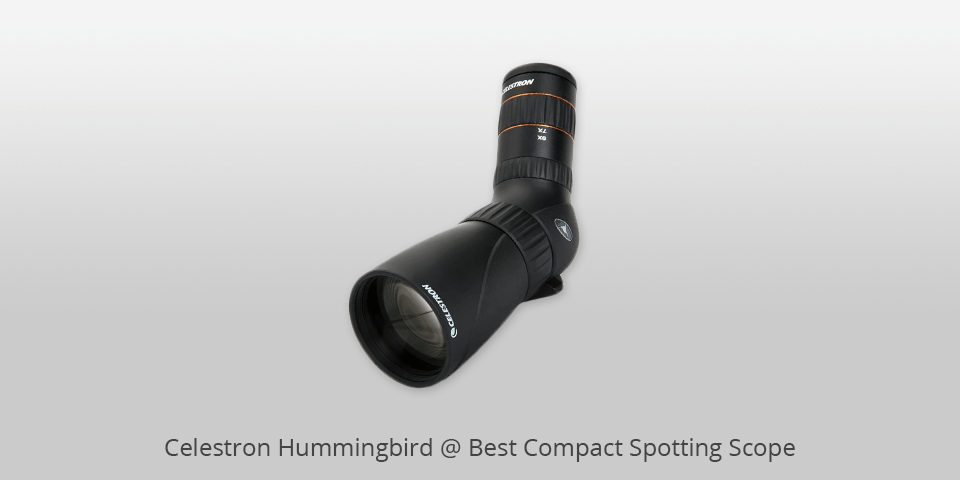
Magnification: 9x 56| Objective diameter: 56 mm | Field of view at 1000m: 39 metres | Closest focusing distance: 10 ft | Eye relief: 18 mm | Weight:650 g
⊕ Convenient and efficient
⊕ Easy mounting
⊕ Vertical focus dial
⊖ None
The Celestron Hummingbird is suitable for observation at different distances. This best compact spotting scope fits in your bag or pocket, which is very handy when you are traveling. This product is very good for birdwatching if you do not want to use big scopes.
Thanks to a low magnification level, it can also be used as a replacement for your binoculars. The ultra-low dispersion (ED) lens glass eliminates chromatic aberrations, a visual defect often occurring in binoculars.
The sharpness and good color correction are provided by the Hummingbird ED lens.
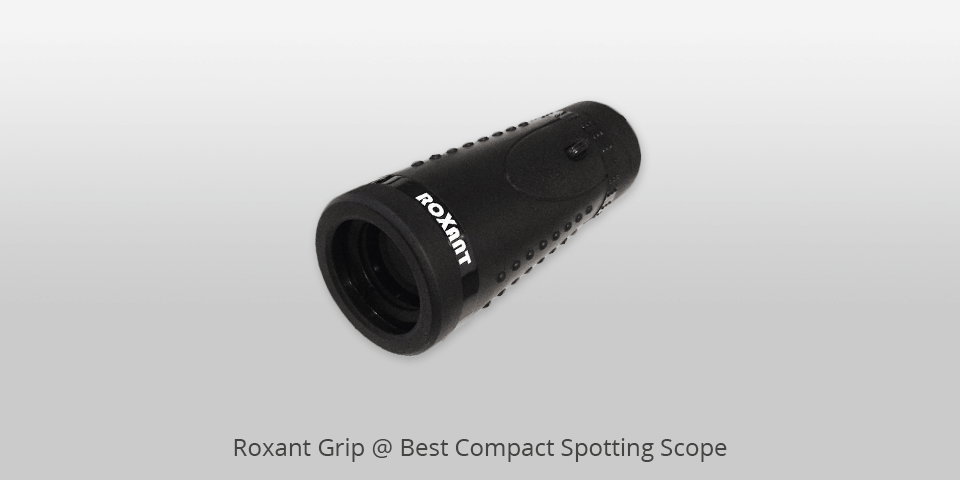
Magnification: 6x 30| Objective diameter:30 mm | Field of view at 1000m: 39 metres | Closest focusing distance: 10 metres | Eye relief: 20 mm | Weight: 300 g
⊕ Perfect for traveling
⊕ Small
⊖ None
This best handheld spotting scope has a very comfortable shape, which will allow you to hold it for a long time. If you enjoy traveling, then, it is a perfect option for you.
With the premium fully multi-coated optical glass and the BAK4 Prism ALL glass lens, you will get a very clear and high-quality image as the light transmission is very good. This 6x30 monocular has a wide field of view and allows you to see a high-resolution image.
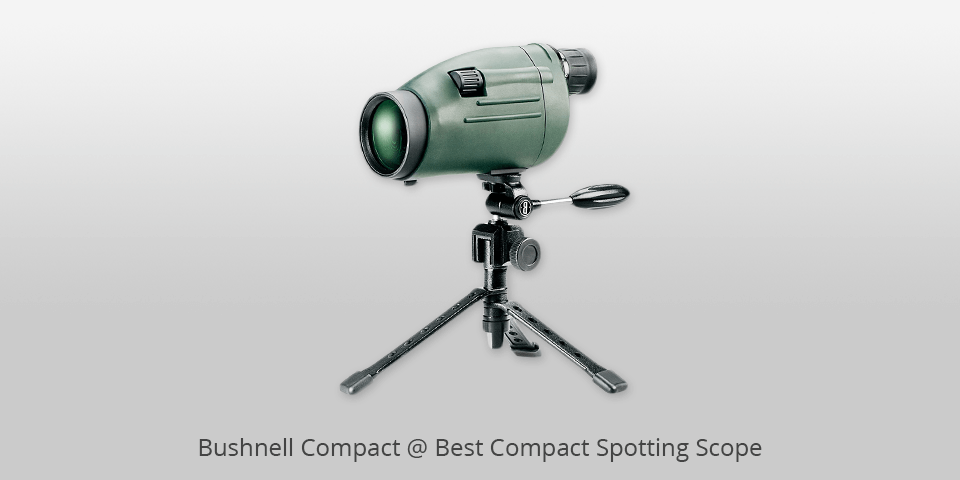
Magnification:12 x50 | Objective diameter:50 mm | Field of view at 1000m: 114 metres | Closest focusing distance: 6 ft | Eye relief: 17 mm | Weight:300 g
⊕ Perfect for hunting
⊕ Convenient
⊕ Top-quality materials
⊖ None
The Bushnell optical scope is quite compact but delivers a powerful performance. A 50mm lens ensures great image sharpness and a 12-36x magnification. Regardless of the weather, you will get great results, because this model is fully waterproof and mist-resistant.
This handheld spotting scope has the Sentry multi-coated lens and delivers highly detailed images. The kit includes a tripod that can be mounted on a car, a soft carrying case, a tripod for long-range use, a secure hard-sided case, and a scope glove. The device also comes with a lifetime warranty from Bushnell.
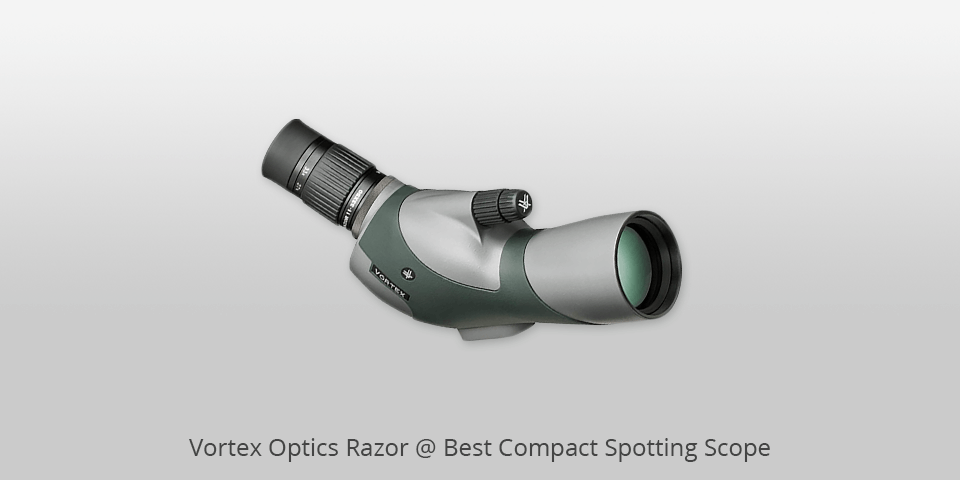
Magnification: 11x 50| Objective diameter: 50 mm | Field of view at 1000m:80 metres | Closest focusing distance:6,6 ft | Eye relief: 18 mm | Weight: 1900 g
⊕ Adjustable eyecup
⊕ Magnification is easy to adjust
⊕ 6.6 feet close focus
⊖ Bulky
The Razor HD is the best Vortex Optics product available. The 11-33x50 angled spotting scope is ultra-easy and quite compact. Excellent resolution and precise aiming are possible thanks to the triple apochromatic lens combined with high-density ED glass.
Thanks to XR Plus special anti-reflective coating, the lens presents a good image even in poor light conditions. This best lightweight spotting scope features a focus wheel that allows for micro- and macro-adjustments.
Use micro-adjustment to see a more detailed image and macro-adjustment to focus on the subject as quickly as possible.You can quickly adjust the magnification with the zoom eyepiece. For convenience, you can fold the eyecup up or down.
Being O-ring sealed and argon purged, the Razor HD is completely waterproof.
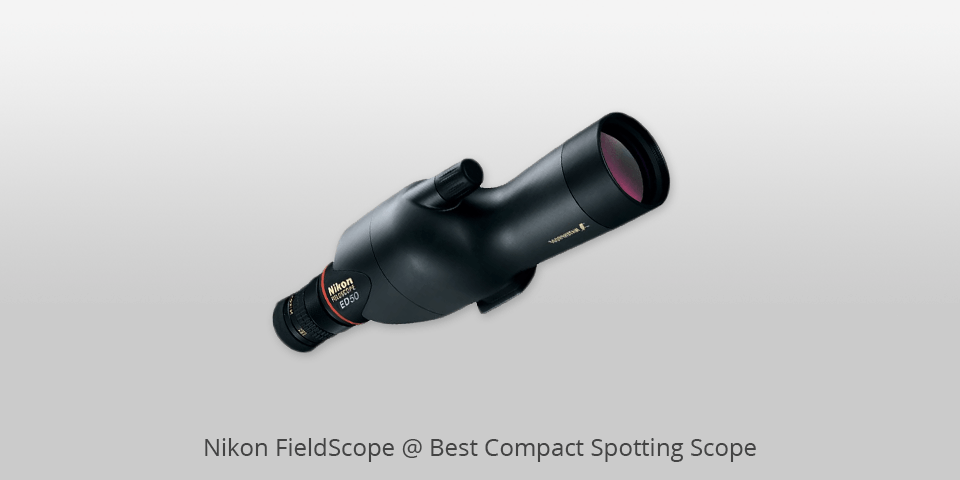
Magnification: 13x 50| Objective diameter: 50 mm | Field of view at 1000m: 58 metres | Closest focusing distance:5 metres | Eye relief: 18 mm | Weight:840 g
⊕ High-definition lenses
⊕ Small and easy
⊕ Excellent optics
⊖ None
The ED50 13-30x50 is a pocket spotting scope from Nikon with a 50mm ED lens for chromatic aberrations. Precise color correction is possible thanks to ED glass developed by Nikon for this purpose.
The ED50 scope is available in either straight or angled design. Angled scopes are considered to be more popular on the market, because they are easier to use if you need to watch birds in the sky or share your equipment with other people.
| Image | Name | Features | |
|---|---|---|---|
 |
Zeiss Carl Optical Dialyt
Our choice |
CHECK PRICE → | |
 |
Leupold GR
Compact |
CHECK PRICE → | |
 |
Roxant Authentic
Modern |
CHECK PRICE → |
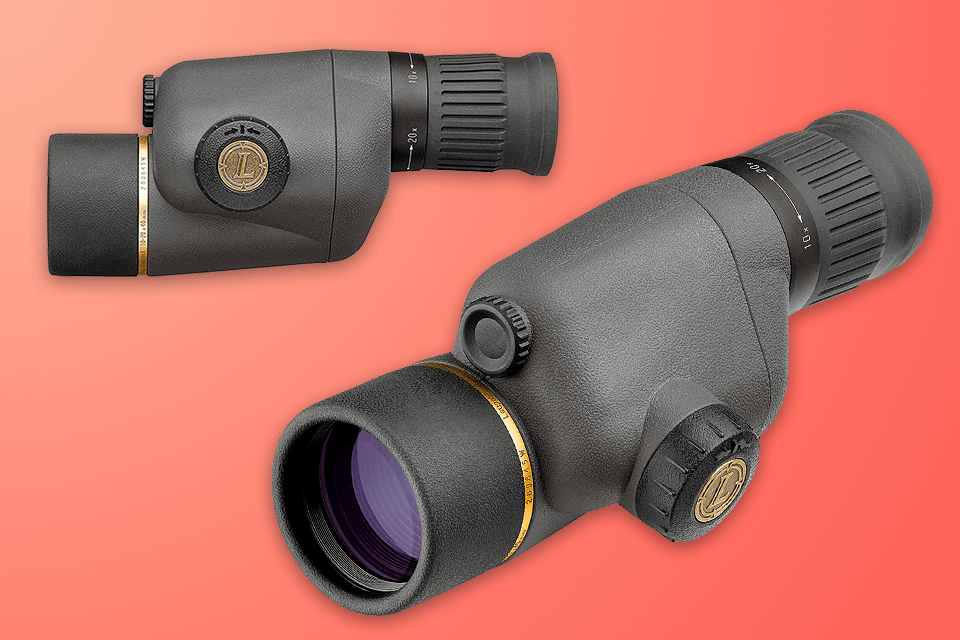
There are different models of scope, with some of them offering detachable eyepieces. When you buy a model with a fixed eyepiece, don’t think that spotting scopes with a large magnification are better.
The best compact spotting scope comes with a magnification ranging from 20x to 30x. The high magnification can result in low image quality because of heat shimmer and vibrations.
For birdwatching, the best option is a zoom eyepiece. The most popular options available on the market are 20-40x, 20-60x and 25-50x.
A spotting scope is marked by three numbers, for example, 20-60×60. The first number designates the zoom range, which is 20-60 times. The second number refers to the size of the lens measured in millimeters.
Some people believe that the bigger these digits are, the better the result will be, but this is not quite true. If a lens is very powerful, you will not be able to see the image clearly. Many compact spotting scopes have a magnification ranging from 15x to 60x. If you see higher numbers, it means that you are dealing with a telescope.
When it comes to the field of view, magnification also plays an important role. A field of view gets narrower with a large magnification. To see the whole picture, you will need to adjust the magnification.
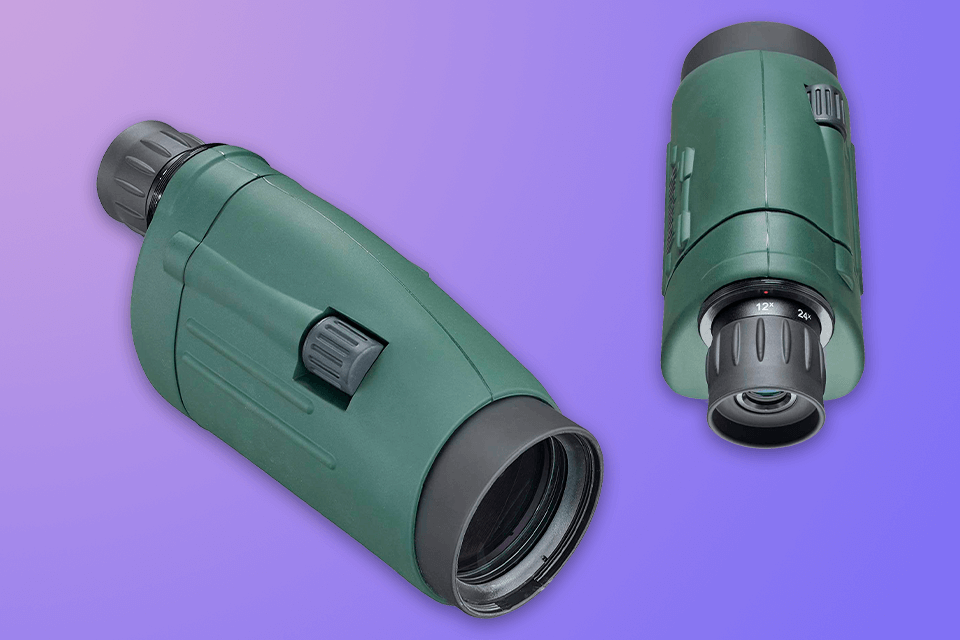
Choosing a lens that suits your purpose is not easy. If the lens is too large, the image will seem blurry and washed out. And if the lens is small, it will gather less light and the image will be distorted. If you need a compact spotting scope for hunting, pick the one with a 50-80 mm lens.
There are larger lenses, of course, but the choice of the lens size depends only on your goal. Do not forget that the bigger a lens is, the heavier a device gets. If you need to carry the equipment with you all the time, choose a more portable option.
Also, don’t forget about the coating. Multi-coated lenses are best for achieving distortion-free image quality.
Many devices now have a variable zoom, with magnification ranging from 15x to 45x or 20x to 60x. You have to choose the best option, depending on your purpose.
There are two types, a straight and an angled one. If you are a hunter or need to look below your level, a straight small spotting scope is best for you. They’re easy to operate. Angled models are better if you enjoy watching birds.
What is better it’s for you to decide, but the difference between the two is that a spotting scope has one lens and one eyepiece, while a pair of binoculars has two lenses and two eyepieces. If you need something more compact, then you should choose binoculars.
It depends on how you are going to use it. Unless you are serious about hunting, it’s better to use regular binoculars instead of a budget spotting scope.

 Rating
Rating